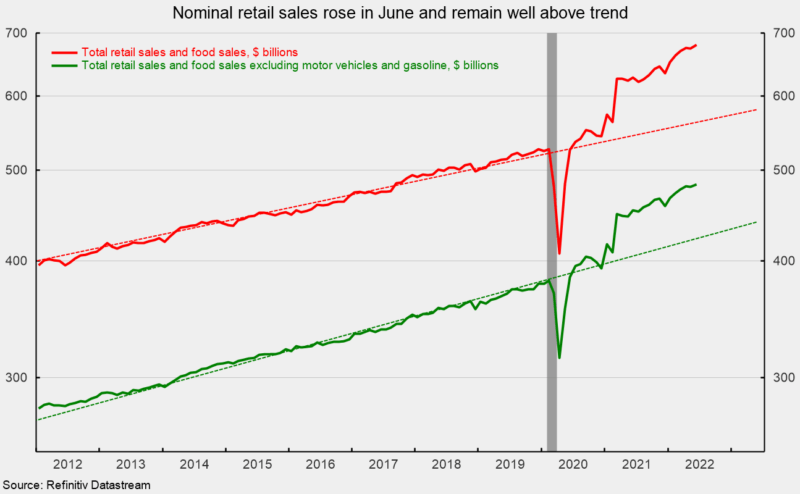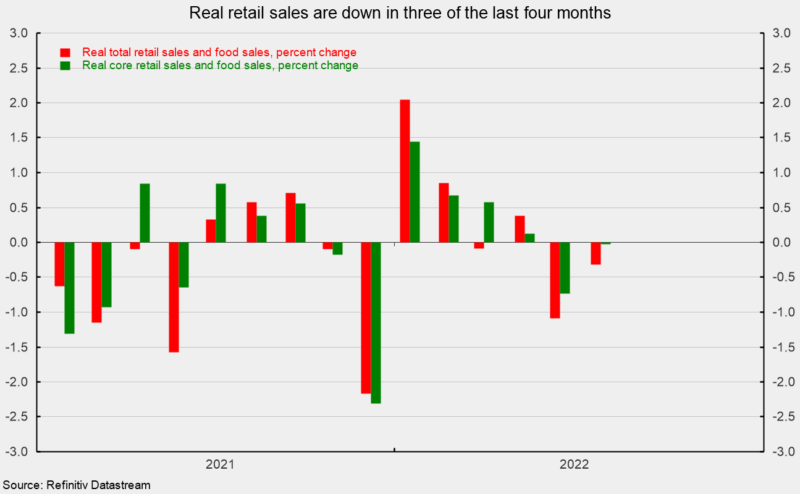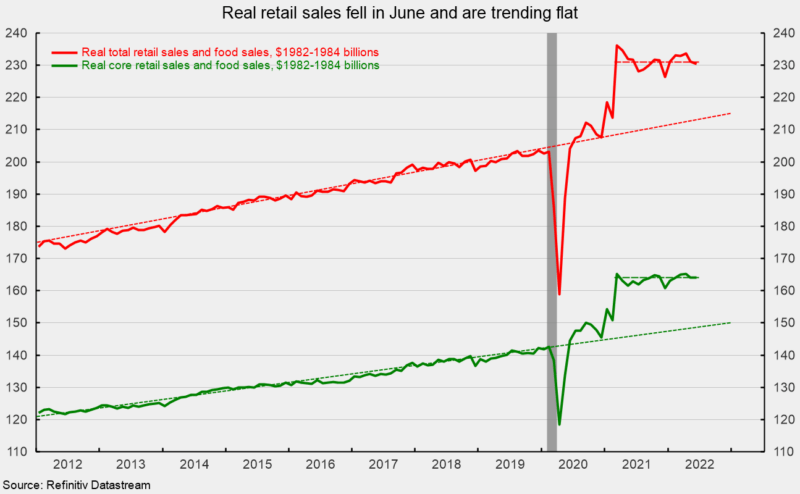Real Retail Sales Decline for the Third Time in Four Months
Retail sales and food-services spending rose 1.0 percent in June following a 0.1 percent decline in May. From a year ago, retail sales are up 8.4 percent. Total nominal retail sales remain well above the pre-pandemic trend (see first chart).
However, these data are not adjusted for price changes. In real terms, total retail sales were down 0.3 percent (adjusted using the CPI) in June following a 1.1 percent decrease in May. Real retail sales have declined in three of the last four months (see second chart). From a year ago, real total retail sales are down 0.5 percent. As with nominal retail sales, real retail sales remain well above trend but since March 2021, real retail sales have been trending essentially flat (see third chart).
Core retail sales, which exclude motor vehicle dealers and gasoline retailers, rose 0.7 percent for the month following a 0.1 percent drop in May (see first chart). Those leave that measure with a 6.6 percent increase from a year ago.
After adjusting for price changes, real core retail sales remained unchanged in June after a 0.7 percent decline in May (see second chart). From a year ago, real core retail sales are up a meager 0.6 percent and have also been trending essentially flat since March 2021 (see third chart).
Categories were generally higher in nominal terms for the month with nine up and four down in June. The gains were led by gasoline spending, up 3.6 percent for the month. However, the average price for a gallon of gasoline was $5.15, up 9.7 percent from $4.70 in May, suggesting price changes more than accounted for the rise. Nonstore retailers (2.2 percent), furniture and home furnishings (1.4 percent), and miscellaneous retailers (1.4 percent) also posted strong nominal-dollar gains. Building materials, gardening equipment and supplies led the decliners with a 0.9 percent drop followed by clothing and accessory store with a 0.4 percent drop.
Overall, retail sales rose 1.0 percent for the month in nominal terms and remain well above trend. Excluding autos and gas, nominal core retail sales posted a 0.7 percent gain. However, rising prices are still providing a significant boost to the numbers. In real terms, total retail sales fell and core retail sales were essentially flat for the month with both trending essentially flat since March 2021.
While continuing labor shortages, along with materials shortages and logistical issues, are likely to continue to slow the recovery in production across the economy, sustaining upward pressure on prices, the effects of inflation on consumer attitudes combined with an intensifying Fed tightening cycle may lead to significant demand destruction and raises the risk of recession. In addition, the fallout from the Russian invasion of Ukraine and waves of lockdowns in China remain threats to economic expansion. The outlook is highly uncertain. Caution is warranted.








